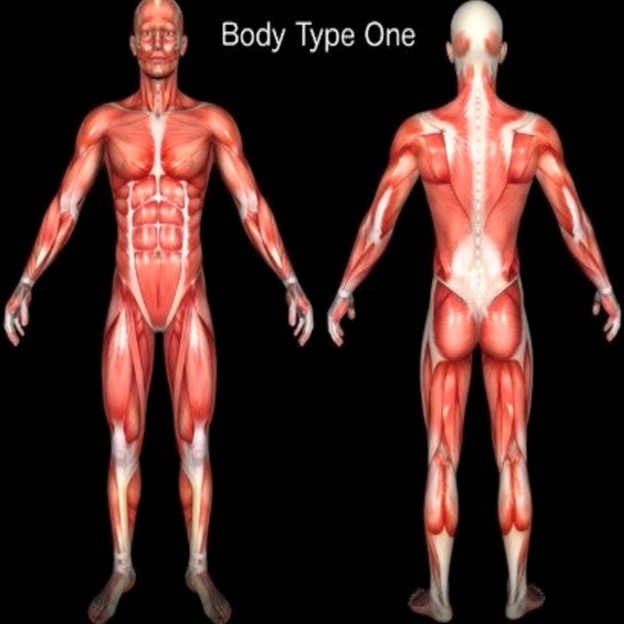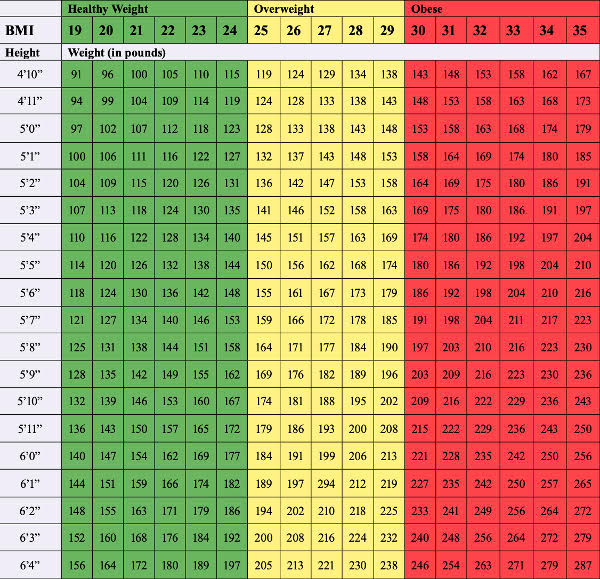When you visit your doctor for your regular check-up, just like every human being, your body and health are judged by three main scientific standards to determine if you are healthy and “normal.”
Standard 1 is the Standard Scientific Human Body Anatomy Book Body Type (BT1) found in any scientifically approved human body anatomy book. According to mainstream science and medical doctors, every human being is born in a standard BT1. Even if you are diagnosed with an abnormality like scoliosis or Poland’s Syndrome, you are still a BT1, just with a specific diagnosis. The BT1 is not accurate because it fails to take into account genetics and skinny fat (cellulite, thin fat, loose skin, saggy skin, creepy skin, normal weight obesity).
Standard 2 is the Body Mass Index (BMI), officially used since the mid-1980s. BMI is not accurate because it, too, fails to take into account genetics and skinny fat. It is also inaccurate because it does not calculate excess muscle/mass. For someone like Dwayne Johnson (The Rock), his BMI calculation likely places him in the overweight or obese columns of the standard BMI chart weight scale, but he most certainly is neither.
Standard 3 is the basal metabolic rate (BMR), calculated through the Mifflin St. Jeor equation and Harris-Benedict formula for activity. The standard BMR calculations do not incorporate skinny fat like the other two standards. Science recognizes that one pound of muscle burns six calories per day, but one pound of fat/skinny fat only burns 2-3 calories, all of which affect metabolism. If you have skinny fat on your body where there should be muscle/mass, but you are relying on the standard BMR calculations, you are likely eating too many calories per day.
The evolving definition of obesity
Until now, mainstream scientists and medical doctors have viewed obesity strictly as an energy imbalance. In other words, too many calories are consumed daily above your standard BMR, which takes you outside your safe BMI chart weight range columns (green) into the unsafe obese columns (red). Obesity is defined as having too much fat on your body.
Again, according to mainstream scientists and medical doctors, to lose the extra fat (calories) weight on your body and get back within your safe BMI to once again be a standard BT1, all you have to do is clean up your diet to reduce your daily calorie intake to at or below standard BMR for a long enough period of time. You can also increase calories burned through proper exercise to expedite the process. Sounds simple enough, right?
But there are real problems with this thinking and approach that mainstream scientists and medical doctors cannot and refuse to explain. For one, there are countless people worldwide who, even when they are within their safe BMI, still experience some form of skinny fat, including normal weight obesity, and do not look like the standard BT1. For many more, this has been a fact since birth — they have never been or looked like the standard BT1. Moreover, there are many people globally who, according to the standard BMI chart, are overweight or obese, but all their other health-indicating factors, including blood pressure, heart rate, cholesterol, blood sugar (A1c), etc. are normal, which has led to the more recent scientific terms obesity paradox and metabolically healthy obese (MHO).
The obesity epidemic, normal weight obesity, and body type science
The global obesity epidemic is getting worse. According to NIH.gov and CDC.gov, the prevalence of obesity in the U.S. has increased from 30.5 percent to 41.9 percent over the last two decades with severe obesity increasing from 4.7 percent to 9.2 percent. Furthermore, WHO.org reports that more than 1 billion people worldwide are obese, equating to 650 million adults, 340 million adolescents, and 39 million children. The scientific data clearly supports obesity being a dangerous disease that increases the likelihood of experiencing other serious conditions and diseases such as heart disease, diabetes, gallbladder disease, cancer, and stroke while reducing life expectancy.
Normal weight obesity, being within your safe BMI but still having too much fat on your body, carries with it many of the same risks as obesity. The overall annual health care costs associated with the disease of obesity are astronomical and unsustainable. Body type science is the key to real sustainability.
Scientific body type is determined by genetics. Diet, exercise, and lifestyle also play main roles. As body type science research grows and we better comprehend how genetics, including skinny fat, diet, exercise, and lifestyle affect the human body — particularly in terms of shape and type, we will more clearly understand what it means to be a healthy human being. This, in turn, will help mitigate the obesity epidemic and improve aggregate human health.
Marc Nelson is a scientific researcher.
Image credit: Shutterstock.com
"type" - Google News
November 04, 2022 at 10:18PM
https://ift.tt/lGXrmyp
Why body type standards are wrong in measuring health - Kevin MD
"type" - Google News
https://ift.tt/jn0ct7z
https://ift.tt/0GWylPE
Bagikan Berita Ini

















0 Response to "Why body type standards are wrong in measuring health - Kevin MD"
Post a Comment